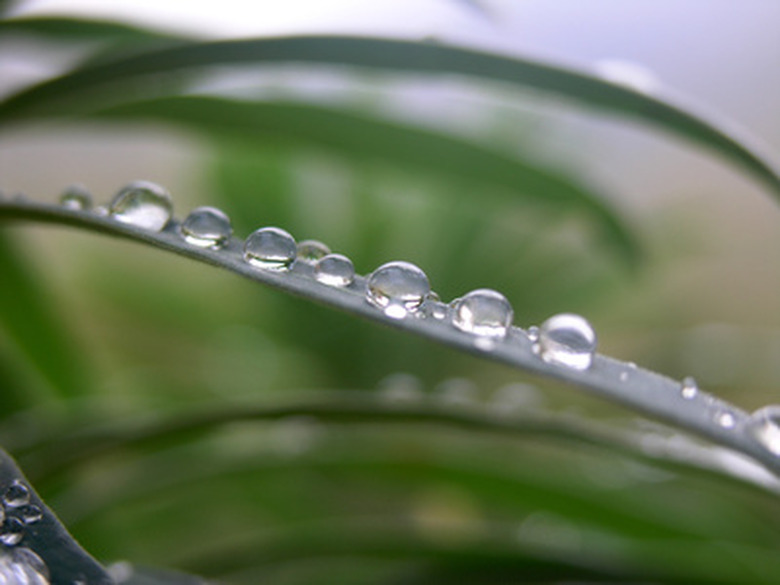How To Seed With A Slit Seeder After Rain
Slit seeders are ideal for re-seeding lawns that have been severely damaged from disease, insect damage or neglect. By creating small slits in the soil, the slit seeder saves you the trouble of having to till the entire area to ensure good seed-to-soil contact. But slit seeding is an invasive process and all of those slits in the lawn can stress the existing grass. A little rain can actually help your lawn recover more quickly from slit seeding. Well-irrigated grass blades can repair their severed root systems more readily than thirsty ones can.
Step 1
Make sure that your lawn isn't too wet. Walk on your lawn a bit. If water squishes around your feet or you create a muddy mess, wait another few hours or even a day before slit seeding. Ideally, the soil should be moist but firm. If your lawn is too wet, the weight of your feet and the slit seeder can do extensive damage to the roots.
- Slit seeders are ideal for re-seeding lawns that have been severely damaged from disease, insect damage or neglect.
- A little rain can actually help your lawn recover more quickly from slit seeding.
Step 2
Set the seeding depth to make 1/4 inch slits in your lawn. Then do a test run on one end of your lawn and measure the depth of the slits made. You may have to raise the slit seeder's tines one notch if the slits are too deep. The tires of your slit seeder may sink a bit in a wet lawn.
Step 3
Set the seed meter (located on the seed hopper in most slit seeder models) on your slit seeder to broadcast seed at half of the rate recommended for your lawn. Make one pass over your lawn, moving in straight rows as you would with a lawn mower.
Step 4
Make a second pass over the lawn to broadcast the other half of the seed. This pass should be made at a 45 degree angle to the first pass that you made.
- Set the seeding depth to make 1/4 inch slits in your lawn.
Step 5
Go over the lawn with a lawn roller after the lawn has dried completely. Usually this is done immediately after slit seeding. But a wet lawn's soil will become too compact and deprive the seeds of oxygen and reduce their germination rates.
Tip
Seed application rates largely depend on the type of grass that you are reseeding. Check the grass seed package's application rates for overseeding a lawn with that type of grass. If there is no rate listed, a general ballpark is somewhere between 6 and 12 ounces per hundred square feet, depending on how sparse the existing grass is.
Things Needed
- Lawn roller
- Grass seed
- Slit seeder
- Ruler
